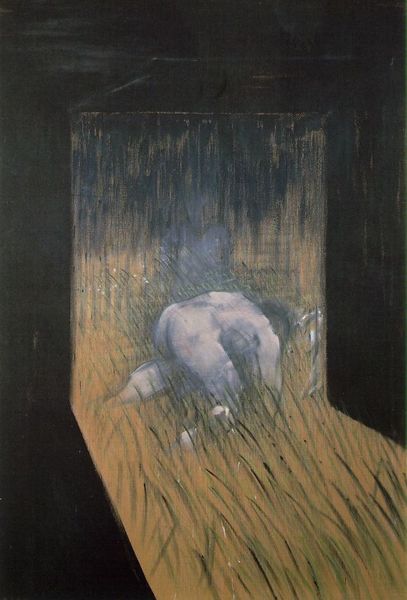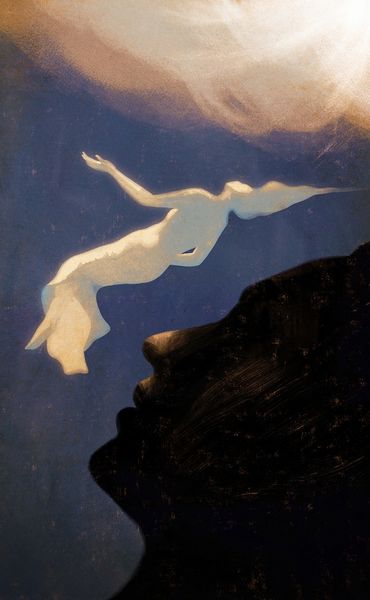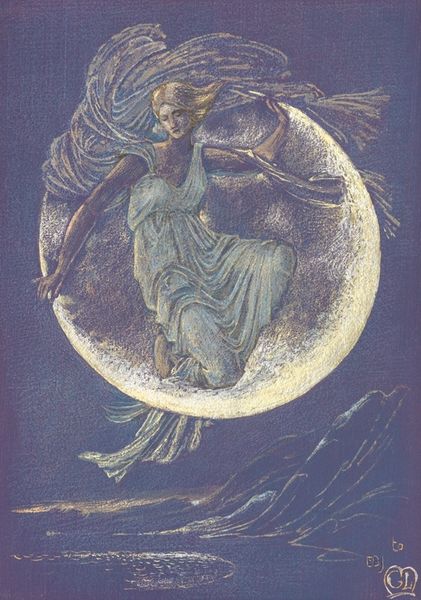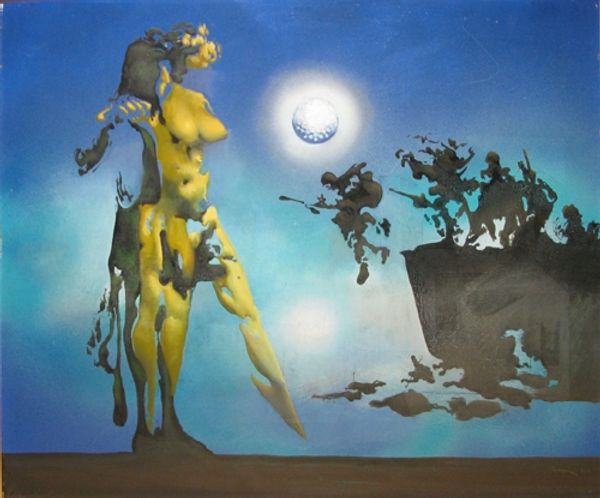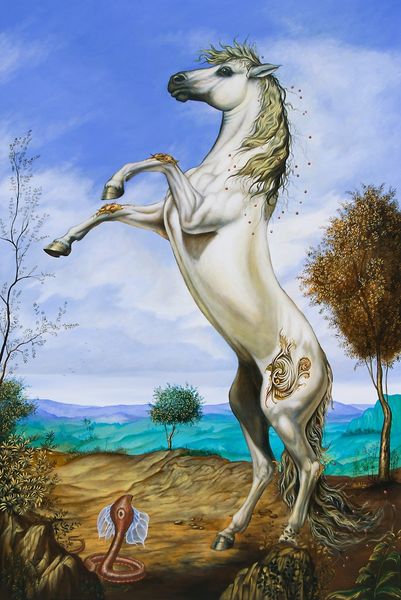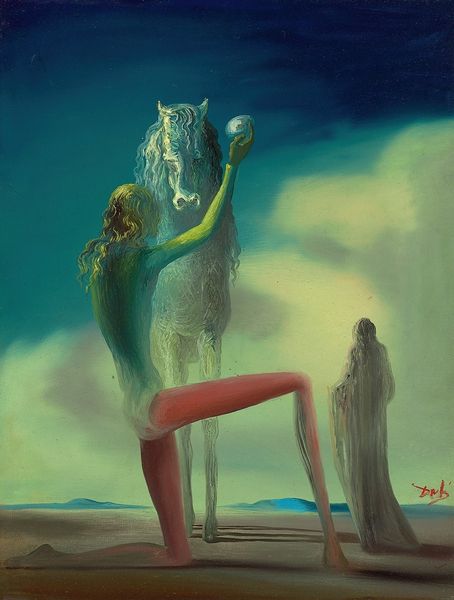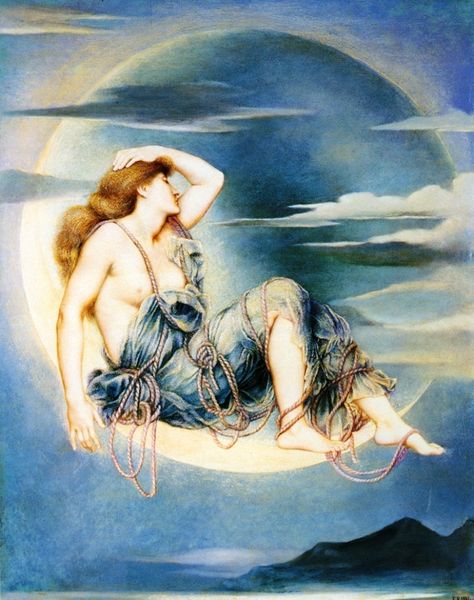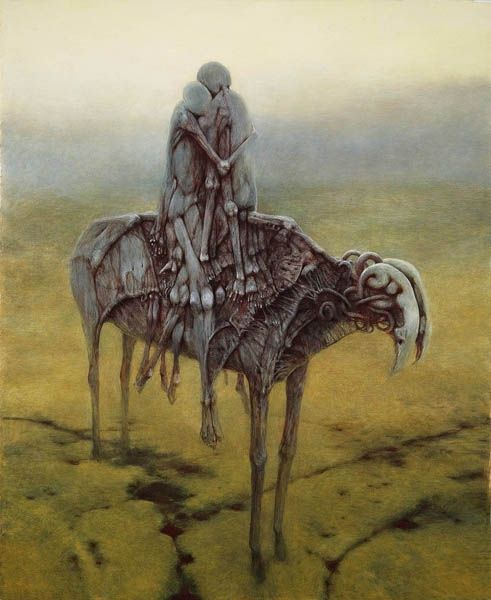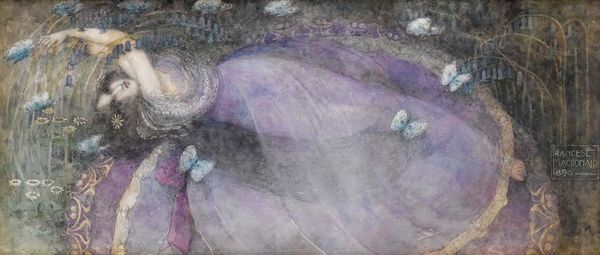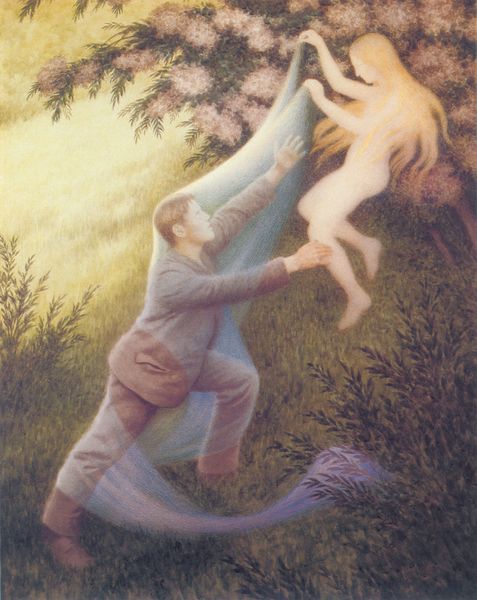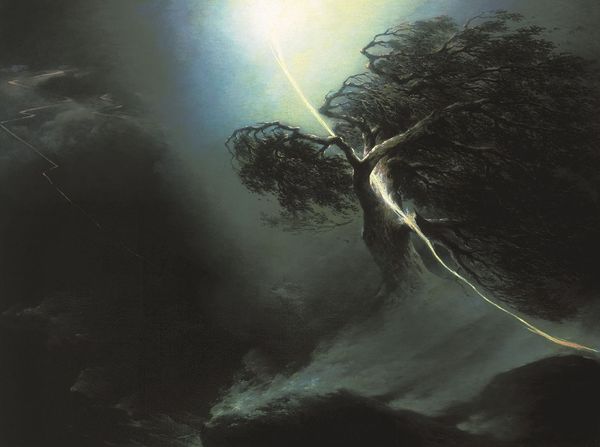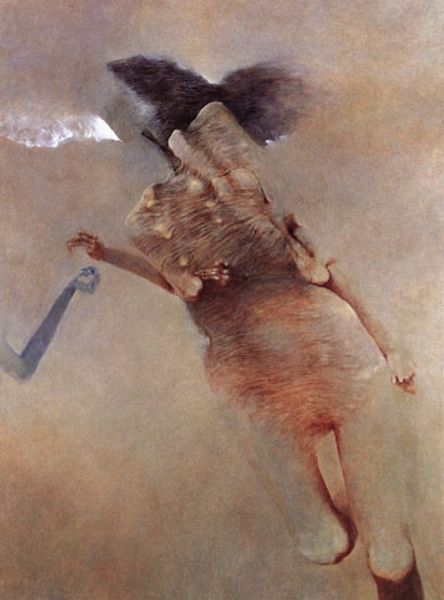
Dimensions: 79 x 56 cm
Copyright: Public domain
Editor: We’re looking at Edward Burne-Jones's "Night," created in 1870, using pastel. The composition feels otherworldly and serene, with a lone figure drifting in a starry landscape. What strikes you about it? Curator: Immediately, I am drawn to the structural opposition within the picture plane. Notice how the artist manipulates line and form to create both a sense of ethereal weightlessness and a grounding in tangible materiality. The figure, seemingly suspended, is simultaneously anchored by the dense, almost tactile quality of the pastel medium. Editor: So it's not just about what is depicted, but also *how* it's depicted? Curator: Precisely. Consider how Burne-Jones uses color: a limited palette of blues and whites dominates, but within that restriction, he achieves remarkable gradations, creating a visual rhythm that moves the eye through the composition. The surface of the figure and that of the background flow as though one form, no real change to textural variety. Editor: It's like the figure is both separate from and one with the background. The treatment of the drapery really emphasises the linear movement as well, wouldn’t you say? Curator: Indubitably, the curvilinear nature of her robe echoes classical statuary and mannerist painting, further integrating visual tension between form and line. But how might that influence meaning within the artistic space? Editor: That is interesting. This really shifted my way of observing! Focusing on those compositional aspects has illuminated aspects I hadn't fully considered before. Curator: Indeed. Engaging with formal elements empowers a richer appreciation, as surface features and structural strategies merge in your reading.
Comments
No comments
Be the first to comment and join the conversation on the ultimate creative platform.
